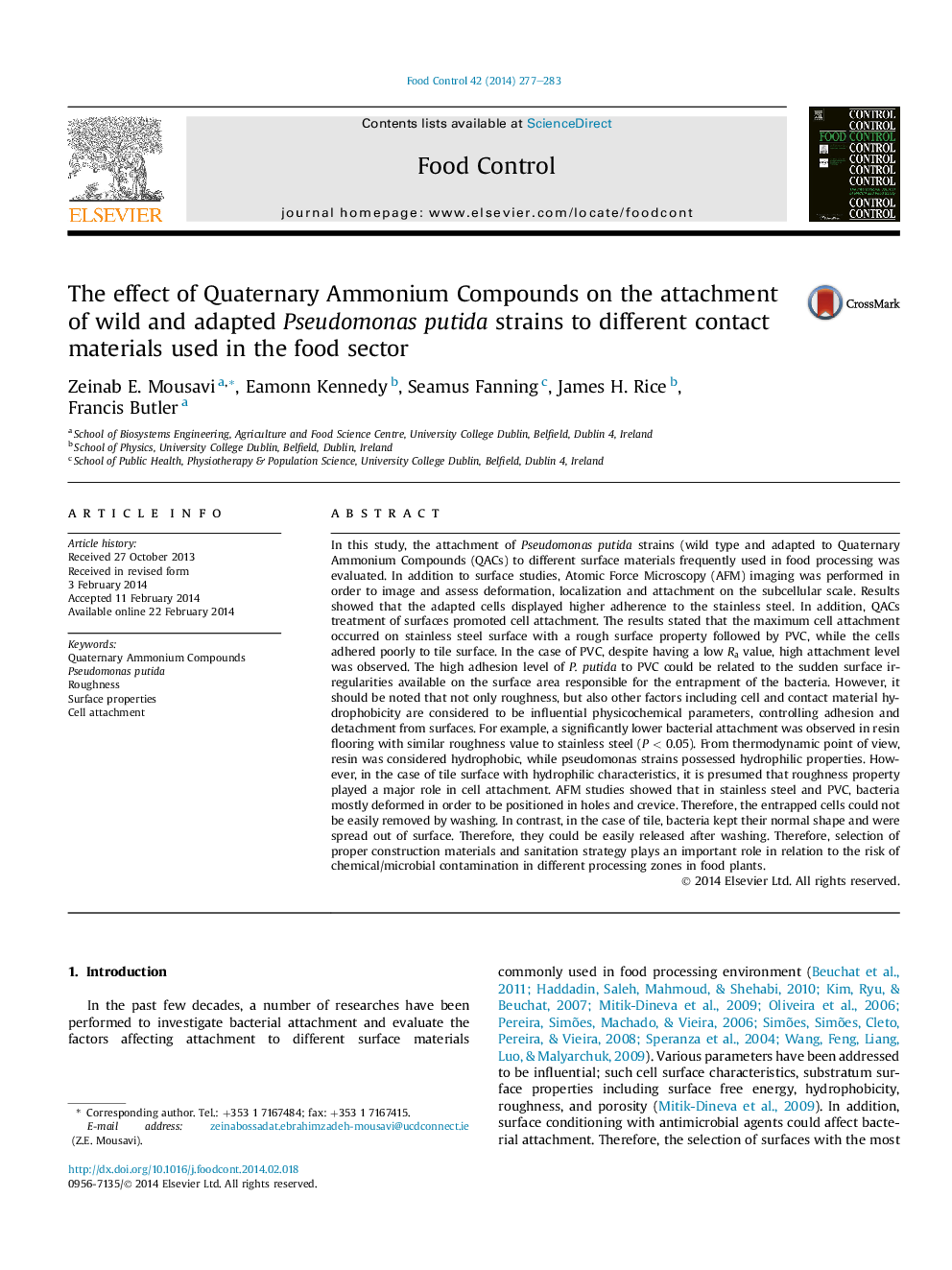| کد مقاله | کد نشریه | سال انتشار | مقاله انگلیسی | نسخه تمام متن |
|---|---|---|---|---|
| 6391711 | 1628420 | 2014 | 7 صفحه PDF | دانلود رایگان |

- Attachment of wild and adapted Pseudomonas putida on different surfaces was studied.
- Surface properties of strains and surface materials were explored.
- More cells were attached to stainless steel and PVC compared to tile and resin.
- Surface treatment with QACs enhanced bacterial attachment.
- AFM imaging showed that cells were mostly entrapped in holes and irregularities.
In this study, the attachment of Pseudomonas putida strains (wild type and adapted to Quaternary Ammonium Compounds (QACs) to different surface materials frequently used in food processing was evaluated. In addition to surface studies, Atomic Force Microscopy (AFM) imaging was performed in order to image and assess deformation, localization and attachment on the subcellular scale. Results showed that the adapted cells displayed higher adherence to the stainless steel. In addition, QACs treatment of surfaces promoted cell attachment. The results stated that the maximum cell attachment occurred on stainless steel surface with a rough surface property followed by PVC, while the cells adhered poorly to tile surface. In the case of PVC, despite having a low Ra value, high attachment level was observed. The high adhesion level of P. putida to PVC could be related to the sudden surface irregularities available on the surface area responsible for the entrapment of the bacteria. However, it should be noted that not only roughness, but also other factors including cell and contact material hydrophobicity are considered to be influential physicochemical parameters, controlling adhesion and detachment from surfaces. For example, a significantly lower bacterial attachment was observed in resin flooring with similar roughness value to stainless steel (P < 0.05). From thermodynamic point of view, resin was considered hydrophobic, while pseudomonas strains possessed hydrophilic properties. However, in the case of tile surface with hydrophilic characteristics, it is presumed that roughness property played a major role in cell attachment. AFM studies showed that in stainless steel and PVC, bacteria mostly deformed in order to be positioned in holes and crevice. Therefore, the entrapped cells could not be easily removed by washing. In contrast, in the case of tile, bacteria kept their normal shape and were spread out of surface. Therefore, they could be easily released after washing. Therefore, selection of proper construction materials and sanitation strategy plays an important role in relation to the risk of chemical/microbial contamination in different processing zones in food plants.
Journal: Food Control - Volume 42, August 2014, Pages 277-283